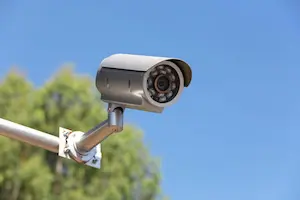How to prevent fog on security camera: User Guide by Remote Techs
Posted By Remote Techs On 04-September-2024

We understand the critical role that security cameras play in safeguarding your property.
However, one common issue that can compromise their effectiveness is fogging. Fog on security cameras not only impairs image quality but can also hinder monitoring critical areas.
This guide will explore practical steps to prevent fog on security cameras, ensuring they operate at peak performance and deliver clear, reliable footage.
1. Understanding Fog on Security Cameras
Fogging on security cameras occurs when moisture condenses on the lens or internal components of the camera. This condensation can result from temperature fluctuations, high humidity, or poor camera housing design. Understanding the causes of fog is the first step in effectively preventing it.
2. Choose the Right Camera Housing
The first line of defense against fog on security cameras is selecting appropriate camera housing. We recommend opting for weatherproof and temperature-controlled housings. These housings are designed to protect your security camera from environmental elements and maintain a stable internal temperature, reducing the risk of condensation.
Weatherproof housings have seals and gaskets that prevent moisture from entering the camera. These housings are essential for outdoor security cameras, which are more exposed to weather conditions. Temperature-controlled housings often include built-in heaters or fans that help regulate the camera’s internal temperature, minimizing the chances of fog formation.
3. Use Anti-Fog Coatings
Another effective measure to prevent fog on security cameras is applying anti-fog coatings. These coatings are designed to create a thin, invisible layer on the camera lens, which repels moisture and prevents condensation. We recommend using high-quality anti-fog sprays or films designed explicitly for optical lenses.
When applying an anti-fog coating, ensure the security camera is turned off and the lens is clean. Follow the manufacturer’s instructions for the coating application to achieve the best results. Regular reapplication may be necessary, especially in areas with high humidity.
4. Ensure Proper Ventilation
Proper ventilation is crucial in preventing fog on security cameras. A well-ventilated camera housing allows air to circulate freely, reducing the buildup of moisture inside. We advise installing security cameras in locations where air circulation is adequate, such as well-ventilated outdoor areas or indoor environments with good airflow.
Consider using housings with ventilation ports or built-in fans for outdoor security cameras. These features help dissipate heat and moisture, preventing fog formation. Additionally, avoid placing cameras in areas prone to direct exposure to rain or snow without adequate protection.
5. Maintain Optimal Temperature
Temperature fluctuations can contribute to fog formation on security cameras. To mitigate this, it is essential to maintain a stable temperature around the camera. We recommend using security cameras with built-in temperature regulation features, such as heaters or fans, especially in regions with extreme weather conditions.
Maintaining a consistent room temperature for indoor security cameras can help prevent fog. Avoid placing cameras near extreme heat or cold sources, such as air conditioning units or heaters, as these can cause temperature swings that lead to condensation.
6. Regular Maintenance and Cleaning
Regular maintenance and cleaning of your security cameras prevent fog and ensure optimal performance. We emphasize the importance of routine inspections to identify any signs of moisture or condensation. Check the camera lens and housing for any signs of fogging or damage.
When cleaning your security cameras, use a soft, lint-free cloth and a mild cleaning solution specifically designed for optical surfaces. Avoid using abrasive materials or harsh chemicals that can damage the lens or coating. Regular cleaning helps maintain clear visibility and prevents the accumulation of dust and moisture.
7. Install Dehumidifiers
Installing dehumidifiers in areas with high humidity levels can effectively prevent fog on security cameras. Dehumidifiers help reduce the overall moisture content in the air, minimizing the risk of condensation. We recommend placing dehumidifiers in rooms or areas where security cameras are installed, especially in regions prone to high humidity.
Ensure that dehumidifiers are adequately maintained and emptied regularly to ensure their effectiveness. By controlling humidity levels, you can significantly reduce the likelihood of fog forming on your security cameras.
8. Upgrade to Modern Security Cameras
If you are experiencing persistent fogging issues despite following the above measures, consider upgrading to modern security cameras with advanced features. Many new models have built-in anti-fog technology and improved housing designs that address common fogging issues.
We offer a range of state-of-the-art security cameras designed to perform reliably in various environmental conditions. Upgrading to these models can enhance image quality and reduce fogging problems.
9. Implement Environmental Controls
Finally, environmental controls around your security cameras can help prevent fog formation. For outdoor installations, consider using awnings or covers to shield the camera from direct exposure to rain and snow. For indoor installations, ensure the area around the camera is well-ventilated and free from excessive moisture sources.
By taking these preventive measures, you can ensure that your security cameras remain clear and functional, providing reliable surveillance for your property.
We are committed to helping you maintain the highest security and performance standards for your security cameras. By following these guidelines, you can effectively prevent fog and ensure that your cameras continue to provide clear, accurate footage.